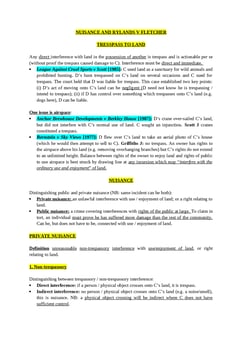Wilsher v Essex Area Health Authority [1988] AC 1074; [1988] 2 WLR 557; [1988] 1 All ER 871
Judgement for the case Wilsher v Essex Area Health Authority
Table Of Contents
KEY POINTS
-
Negligence by medical practitioners, particularly in the care of premature babies, can lead to devastating consequences.
For instance, misplacement of an umbilical catheter may result in false blood oxygen level readings.
Delayed detection of such errors can contribute to serious health issues like retrolental fibroplasia and blindness in the baby.
-
Legal proceedings often involve inconclusive expert evidence on the actual cause of injury, placing the burden of proving causation on the legal system.
The failure to monitor oxygen levels accurately is recognized as a potential cause, emphasizing the critical need for precise and vigilant medical care.
This highlights the importance of accountability in protecting the well-being of vulnerable patients who cannot advocate for themselves.
FACTS
-
Martin Graham Wilsher ("Plaintiff") had been born prematurely and was placed in a special care baby unit at a hospital managed by Essex Area Health Authority ("Defendants").
Survival required extra oxygen, necessitating the insertion of a catheter into an umbilical artery for accurate arterial blood oxygen level readings on an electronic monitor.
Unfortunately, a junior doctor mistakenly inserted the catheter into the umbilical vein, causing the monitor to display lower readings.
The X-rays revealed and recognized the error, acknowledging discrepancies in the monitor readings.
The senior registrar attempted to rectify the situation by inserting another catheter into the same vein, and alternative methods of monitoring arterial blood oxygen were adopted.
The next day, the second catheter was replaced by one in the artery.
As a consequence of these events, the Plaintiff developed retrolental fibroplasia, leading to blindness.
-
Seeking damages for negligent medical treatment in the special care baby unit, Plaintiff filed a claim against the Defendant's health authority.
The judge ruled in favor of the Plaintiff, holding the Defendants liable, as they failed to prove that the Plaintiff's condition had not resulted from the negligence of their employees.
The Court of Appeal, in a majority decision, dismissed the Defendant's appeal.
JUDGEMENT
-
On appeal by the Defendants, it was held that the burden of proving causation rested on the Plaintiff.
The court emphasized that the occurrence of retrolental fibroplasia after the Defendants' oversight did not automatically implicate excess oxygen as the cause.
Conflicting expert opinions on whether excess oxygen caused the condition led to a retrial order, as the original judge failed to provide relevant findings.
The Court of Appeal's decision, attributing the Plaintiff's condition to oxygen administration, was reversed due to doubts about resolving conflicting expert opinions.
COMMENTARY
-
The case shows the grave consequences of medical negligence, particularly in the care of premature babies.
The misplacement of an umbilical catheter, resulting in false blood oxygen level readings, can lead to severe health issues such as retrolental fibroplasia and blindness in infants.
Legal proceedings often grapple with inconclusive expert evidence, placing the burden of proving causation on the legal system.
-
In the specific case of Martin Graham Wilsher, born prematurely and placed in a special care baby unit, the catheter's misplacement led to inaccurate monitor readings.
Despite attempts to rectify the error, the plaintiff developed retrolental fibroplasia and subsequently filed a claim against the Defendant's health authority.
The court ruled in favor of the plaintiff, holding the defendants liable for their failure to prove that the Plaintiff's condition did not result from negligence.
-
Upon appeal by the Defendants, the court emphasized that the occurrence of retrolental fibroplasia did not automatically implicate excess oxygen as the cause.
Conflicting expert opinions on this matter led to a retrial order, as the original judge failed to provide relevant findings.
The Court of Appeal's decision attributing the Plaintiff's condition to oxygen administration was ultimately reversed due to doubts about resolving conflicting expert opinions.
This case highlights the importance of accountability in ensuring precise and vigilant medical care for vulnerable patients and the legal system's role in establishing causation in medical negligence cases.
ORIGINAL ANALYSIS
Defendants messed up the blood pressure levels when Plaintiff was a baby with the result that they treated him incorrectly and he went blind.
The judge ruled that since Defendants had failed to prove that they did NOT cause the blindness they were liable.
-
HL reversed this and said that causation had to be proven on the balance of probabilities, the burden being on the plaintiff.
Since this had not been done, there would have to be retrial.
For Further Study on Wilsher v Essex Area Health Authority
Need instant answers? Our AI exam tutor is here to help.
Ask questions 🙋 Get answers 📔 It's simple 👁️👄👁️
Our AI is educated by the highest scoring students across all subjects and schools. Join hundreds of your peers today.
Get StartedSimilar Cases
Related Product Samples
These product samples contain the same concepts we cover in this case.

 Since 2010, Oxbridge Notes has been a trusted education marketplace, supplying high-quality materials from top achievers at universities like Oxford, Cambridge, LSE, Harvard, and Yale.
Since 2010, Oxbridge Notes has been a trusted education marketplace, supplying high-quality materials from top achievers at universities like Oxford, Cambridge, LSE, Harvard, and Yale.